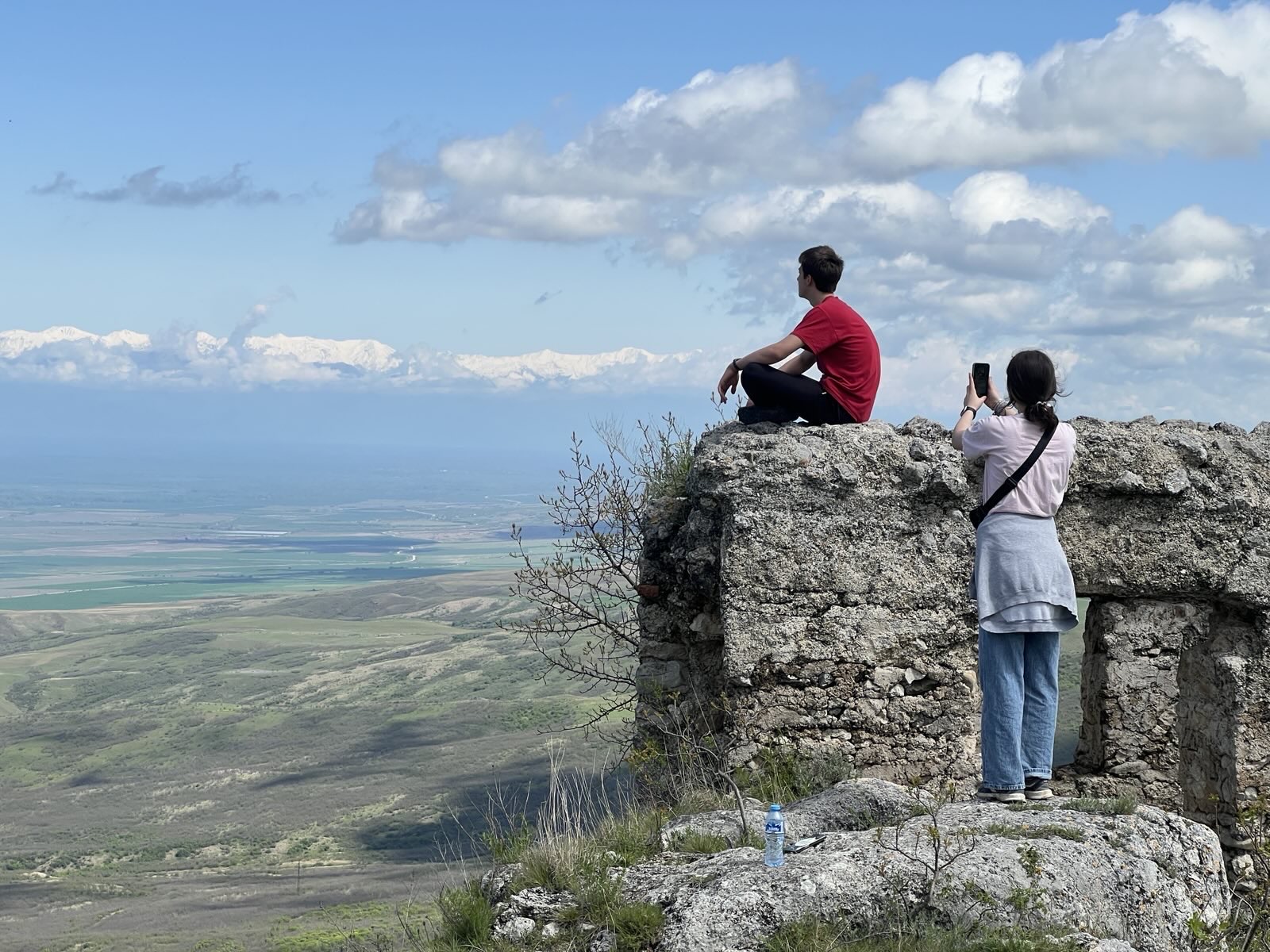With all the different events going on in the world today, an obvious thing to consider before you travel is the safety of the country you will be in. Armenia, Azerbaijan, and Georgia all made international news headlines in 2024, for reasons that may have rightly made travelers ask:
Is it safe for me to travel there?
Read on to hear our view on whether or not it’s safe to travel to the Caucasus in 2025.
HOW SAFE IS THE CAUCASUS RIGHT NOW?
From our 10+ years of personal experience, we have found that it is highly unlikely that you will be put in any more danger in Georgia, Armenia, and Azerbaijan than you would in any other part of the world.
My wife and I have lived in the Caucasus since 2015 with our four young children, both the North Caucasus in Russia and the South Caucasus in Georgia, and are happy to call it home. Our kids have attended local schools, we have gone on vacations, to weddings, to funerals, from Mt. Kazbek to Dagestan; from swimming in the Black Sea to skiing down the slopes of Mt. Elbrus, you name it, we have probably experienced it.
One thing we have learned is that the “event” you hear about on the news, as real and life-altering as it is for those involved (protests, riots, armed conflicts, etc.), often is limited to a very small geographic area, and the large number of common people in that country go about their day-to-day lives with no real change. An example of this is the protests in Tbilisi in 2024; we moved out of Tbilisi during the summer, and practically felt little effect on our daily lives despite all that was happening in the capital city.
That being said, you want to be as thorough as possible when deciding to make a big international trip, so here are some aspects of traveling in the Caucasus region that you may want to be aware of as you make travel plans in 2025 and beyond!

PROVEN TOURISM TRACK RECORD:
Georgia, Armenia, and Azerbaijan continue to climb in popularity of places to visit by international travelers, as well as promoted by various travel publications. Here are just a few notable publications that have featured cultural & food experiences in a Caucasus country in the past two years:
- Forbes Best Place to Travel (Armenia & Georgia)
- National Geographic (Azerbaijan & Tbilisi)
- Conde Nast (Georgian wine)
The reviews aren’t only limited to Georgian wine, Azerbaijani plov, or Armenian dolma, though.
The expansive adventure offerings of the Caucasus Mountains in each country continues to grow and draw rave reviews:
Gudauri and other ski resorts in Georgia growing in popularity & affordability compared to their expensive European counterparts
Georgia being home to four of Europe’s ten highest mountaineering peaks
SAFETY OF TOURISTS IN THE PAST:
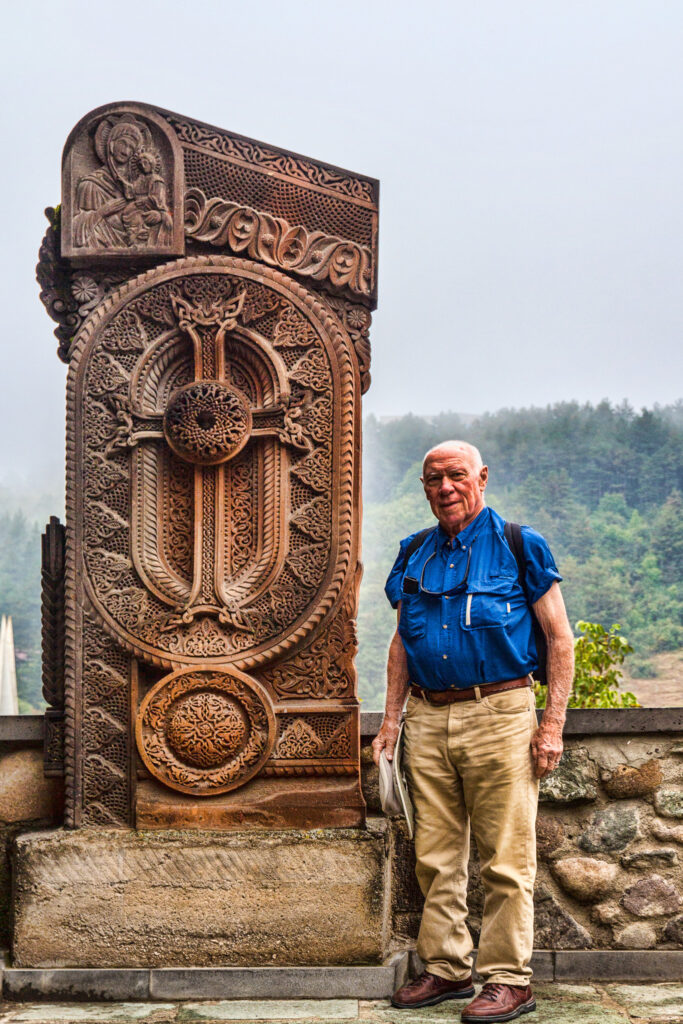
Tourism is a big part of each Caucasus country’s economy, and local people are very welcoming to those who are visiting. Caucasus hospitality towards guests often wows international visitors.
For those partaking in our mountaineering expeditions, be assured that we only work with experienced, local guides who have the appropriate professional qualifications, either GMGA or IFGMA certification (Mt. Kazbek mountaineering guides). Our cultural guides are English-speakers and will handle themselves professionally and safely on the roads, no matter where you travel with them.
We also have American representatives living in the Caucasus. They constantly monitor the safety of Armenia, Georgia, and Azerbaijan as a whole for all our travelers.
Adventure travel in the Caucasus carries with it risks that come no matter where in the world you’re climbing a mountain, skiing, hiking, horseback riding, etc. Avoid unnecessary risks and always undertake your adventures with others present!
One big (often unspoken) advantage to having a local driver/guide with you as you travel, is they can act as a buffer to any unforeseen (or foreseen!) situation with people or conditions. Having someone with you who is fluent in the local language and aware of their home country’s surroundings is a huge plus to traveling with a local guide.
TRAVEL ADVISORIES:
Checking your government’s travel advisory is a good place to start when getting a feel for how advisable it is to travel to a foreign country. Because we are Americans, we typically check what the US State Dept. says. It’s advisable to check your own home country’s travel advisory and can be helpful to compare & contrast with multiple other countries’ travel advisories to get a holistic picture of the current situation. Do remember that governments always err on the side of extra-careful so there are times when a travel warning may seem outdated or overly cautious.
Currently, the US State Dept. gives a Level 1 rating out of 4, i.e. the best possible safety rating for international travel, to Georgia (i.e. “Exercise Normal Precautions”). The borders around and actual occupied (by Russia) Georgian regions of Abkhazia & South Ossetia are specifically labeled as “Do Not Travel” zones by the State Dept.
Armenia & Azerbaijan both have a Level 2 rating (i.e. “Exercise Increased Caution”), specifically in reference to the Nagorno-Karabakh conflict around the Armenia/Azerbaijan border (see below for more info). Level 4, i.e. “Do Not Travel,” is issued both for inside of Armenia & Azerbaijan near the joint border with the other respective country, as well as in the Karabakh region.
To read for yourself, here are the travel advisory pages for Georgia, Armenia, and Azerbaijan.
PAST AND PRESENT CONFLICTS:
There are several areas of the Caucasus that we would advise caution & discernment in your movements due to past & present conflicts. We touched on this briefly in the previous section; below you can read about these in more detail:
Armenia – In the SE part of the country around the border with Azerbaijan. This is near the Nagorno-Karabakh region in Azerbaijan, where a continual 30+year conflict was happening between the two countries until coming to an abrupt end in Sept. 2023. This former independent territory is now completely under Azerbaijan’s control. Stay away from the Lachin Corridor as well as the Azerbaijan border, as it is no longer viable to attempt to travel to Nagorno-Karabakh from mainland Armenia. That being said, the mountainous area of Goris and the well-known Tatev Monastery are very safe to visit and continue to attract large numbers of international travelers to this part of Armenia.
Azerbaijan – For similar reasons to above, we at the moment do not advise travel to the Nagorno-Karabakh district or around the Armenia border while in (western) Azerbaijan. If visiting Armenia via Georgia after your travel to Azerbaijan (as many international travelers do in one visit), it’s very possible you will be asked questions at the Armenian border about your recent visit to Azerbaijan, and specifically if you went to the Karabakh region. Our guests have always been allowed in to Armenia with an Azerbaijan stamp, but it is possible you will be asked some questions as to your reasons for visiting Azerbaijan.
In Dec. 2024, there was also an incident involving an Azerbaijani airline being shot at by Russian anti-air missiles, and eventually crashing in Kazakhstan. To be clear, this happened IN Russian airspace, NOT in Azerbaijani airspace. We have had questions about the safety of flying to/from Azerbaijan, and did want to clarify that this happened in Russia, not in Azerbaijan.
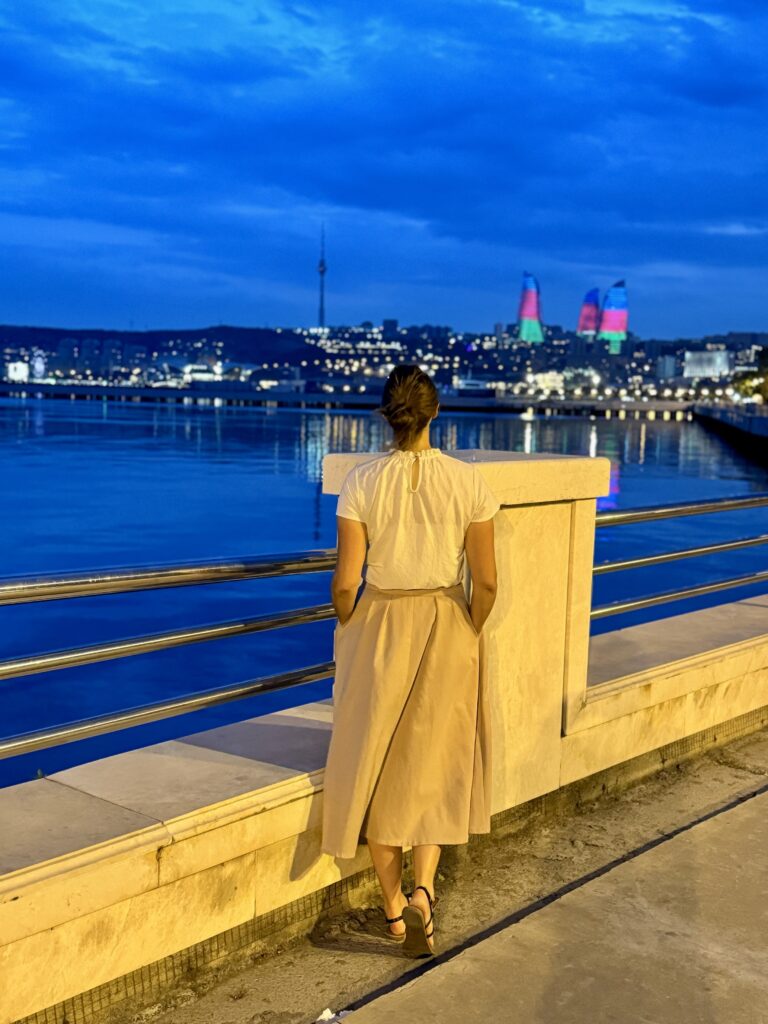
Georgia – Tbilisi made international news much of 2024 for its wide-scale protests concerning new laws that were passed in the Spring as well as the election results from the Fall. Protests were nation-wide but the largest gatherings were in Tbilisi, many of which resulted in clashes between protesters and police. At the time of this writing (Spring 2025), the protests have significantly declined, but that is not a guarantee that they won’t start back up again. As an international traveler, the main way to avoid getting caught up in any violence with protests is to avoid downtown Tbilisi after 5:00 pm during your visit, primarily Rustaveli Ave.
Georgia also has two areas of occupied territory by Russia: Abkhazia (1993) and South Ossetia (2008). There is zero entry into these territories by foreign citizens from inside of Georgia.
***If you spend time in Abkhazia and South Ossetia via the Russian side of the border (the only routes possible for foreigners requiring additional visas in addition to Russian visas), you can expect to be denied entry to Georgia if trying to enter Georgia with these stamps in your passport.
Ukraine – We have had many guests and potential guests express concern (understandably) about the safety of visiting the Caucasus while the war in Ukraine continues. This is a legitimate concern and we did want to address some of them here:
- Ukraine is quite far removed from Georgia geographically; it is on the far side of the Black Sea from western Georgia’s (eastern) Black Sea coast.
- There have been no breaches of Georgian air space by drones or Russian military aircraft (that we know of).
- The Georgian land border with Russia (i.e. near Stepantsminda/Kazbegi) is quite active with civilian and truck transport traffic; this is a healthy sign.
- There are no immediate signs of or threats of land invasion of Georgia by Russia.
INTERNATIONAL BORDERS:
Armenia borders several countries with strict border policies/control: Azerbaijan and Iran, as well as with Türkiye and Georgia. Be vigilant if visiting any tourist sites near these borders, and be sure to keep a healthy distance from accidentally venturing over an international border.
Azerbaijan – This far eastern Caucasus country borders Iran to the south, Armenia & Georgia to the west, and Russia to the north. Whether on the Caspian Sea coast or in the Caucasus Mountains, be sure to know where you are at all times and not accidentally venture onto a foreign country’s territory. Azerbaijan’s mountain peaks share borders w/ Russia, and climbers have been apprehended before by Russian border police for accidentally straying down the wrong side of the border in the course of their descent. ***There are no tourist cruises/international transport options across the Caspian Sea, so stay close to the coast!
***Currently (Spring 2025), Azerbaijan’s land borders are STILL closed post-Covid-19. International travelers ARE allowed to travel OUT of Azerbaijan by its land borders (the Georgian border post of Lagodekhi/Belokan is the recommended route for this) but NOT allowed to travel in via land; international flights into Baku are the only way to travel into Azerbaijan currently. There are rumors of a Baku-Tbilisi train route re-opening in 2025, but this has not yet happened.
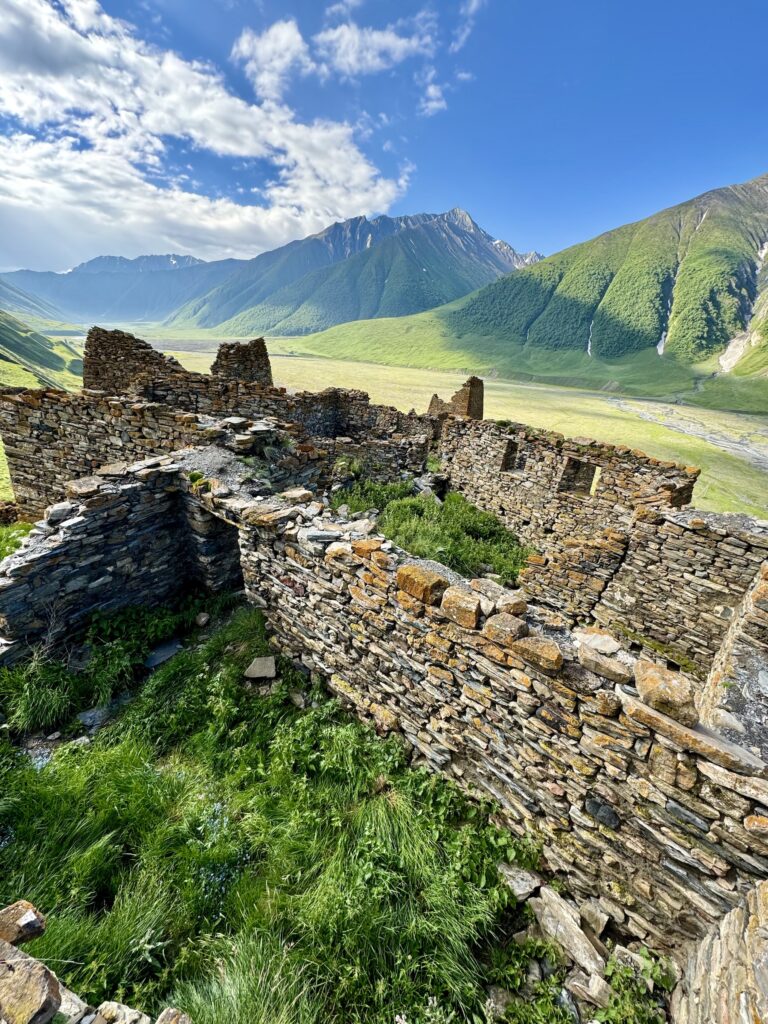
Georgia – Georgia has 3 border crossings with Armenia, any of which can be used by international travelers. There is one land route into Russia via Stepantsminda.
One of the most popular treks in Georgia’s Kazbegi region is to Zakagori Fortress in Truso Valley. Often a Georgian border guard will be posted around this fortress, and be sure to not let foreigners get any closer to the border w/ South Ossetia, which is guarded by Russian border guards.
Keep a healthy distance from the borders with the occupied republics of Abkhazia & South Ossetia, as there have been arbitrary apprehensions and/or fatal incidents with Georgian citizens around each border by Russian border control. For the Georgian border near Abkhazia, this mainly applies around the northern Black Sea beach town of Anaklia and the city (a bit further inland) of Zugdidi. For the Georgian border near South Ossetia, this applies in the wider Gori area, and at the end of Truso Valley beyond Zakagori Fortress. Stick to the tried and true public spaces in these areas; there are many other places in Georgia where you are free to go off-the-beaten-path without concern.
CASTLES, FORTRESSES, MONASTERIES, ETC.
One of the fantastic parts of touring the Caucasus is the plethora of ancient structures you can find across each country: monasteries, castle ruins, fortresses, cave cities, churches, mosques, etc. With this, though, comes the need to be extra careful getting up to these sites and back down to safer ground. Many of these sites are on the sides of mountains or hills, require climbing up slippery rock “steps”, and generally necessitate physical strength & balance. Always visit in pairs at least, and don’t take unnecessary risks to get that “perfect” picture.
Traveling in the region between June and September also means you’ll be doing this in 35+ Celsius temperatures (i.e. 90+ Fahrenheit), so you’ll be exerting more energy, sweating more, and thirsty. Always carry plenty of water on you at this time of year to stay replenished. From some of our older clients (70+), they have given feedback of how difficult some of the fortresses and castles are to climb up to while maintaining balance. Be aware of this.
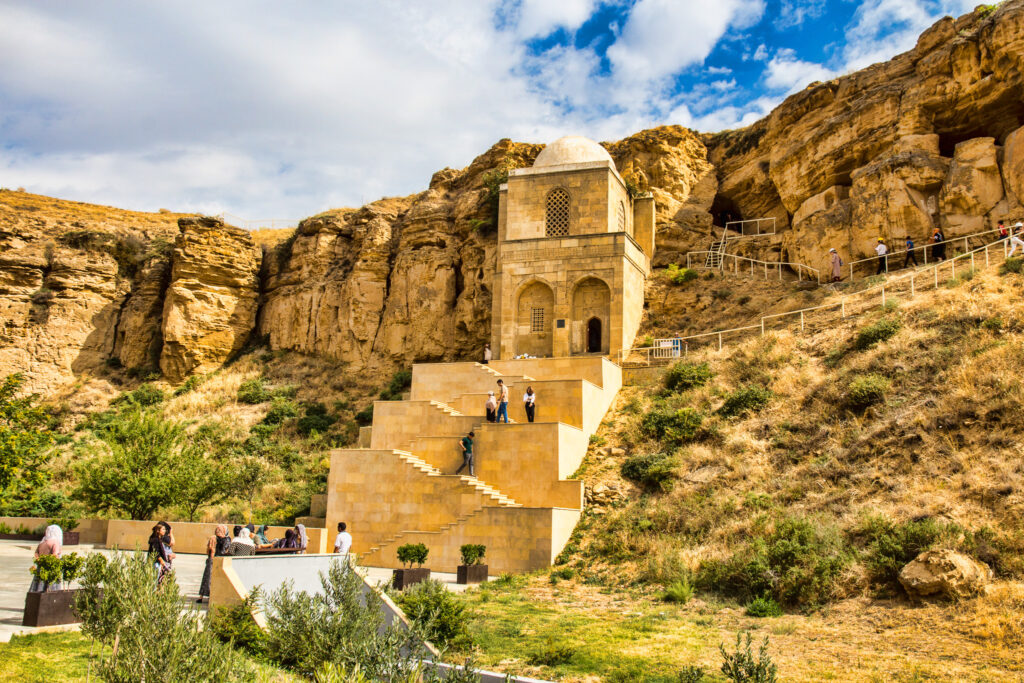
WHERE IT ISN’T SAFE:
If you are concerned about safety during your trip to the Caucasus, here are some practical tips for you:
- Keep your distance from stray dogs. Many foreigners feel a certain compassion towards these lovable creatures but we have quite a lot of acquaintances who have been bitten by stray dogs in Georgia (Tbilisi, Telavi, Stepantsminda and Kutaisi, just from the past year). There are lots of strays in Georgia so do your best to not provoke or get too close to them.
- Avoid being in dark, isolated areas in cities, including back alleys. Baku, Tbilisi, and Yerevan are big cities so it shouldn’t come as a surprise to take precautions of where you find yourself and at what time of day, or night.
- Exercise reasonable discretion with the amount of valuables you carry or jewelry you wear. As in any big city (especially in the capital cities), there might be pickpockets on the lookout for easy targets, especially in crowded or touristy areas.
- Try to stay with with a travel companion! Our customized tours have personal drivers and English-speaking guides that will be with you in case you need anything.
- If you are a woman, use extra caution in being alone.
- Avoid wearing headphones while jogging so that you remain aware of your surroundings.
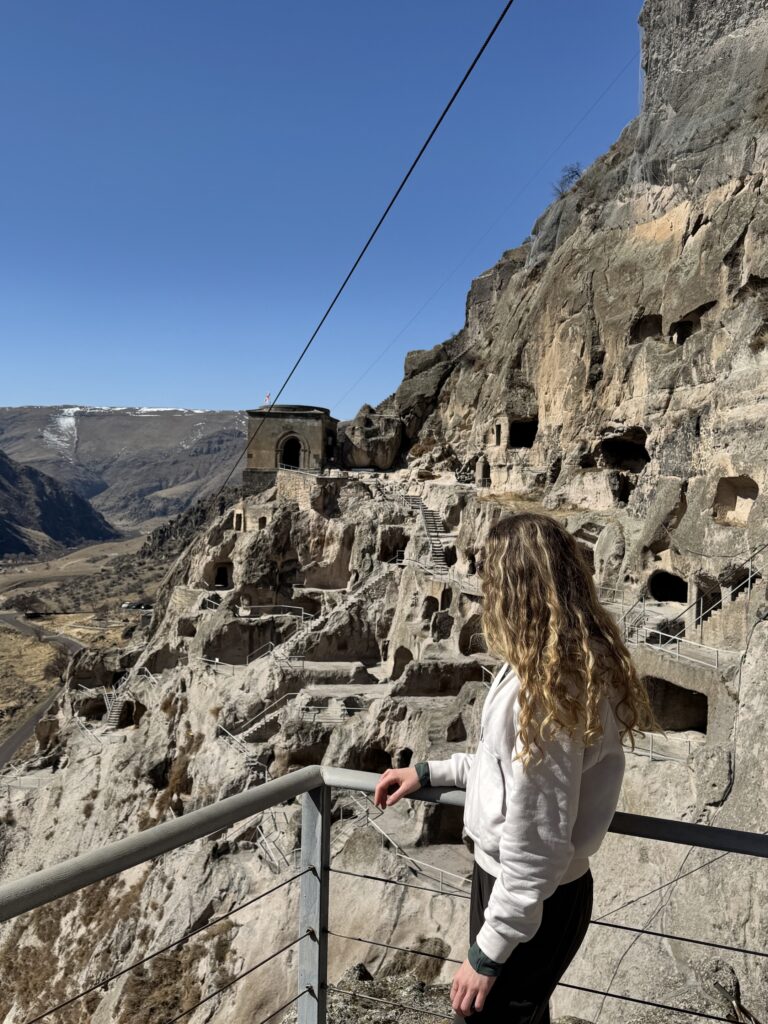
Two of Georgia’s most beautiful mountain regions are Svaneti and Tusheti, and their beauty is unrivaled in many parts of the world. But make sure to have an experienced, safe driver taking you to both locations, as the road is long, windy, and unpaved in multiple sections. This is especially true to Tusheti, as this road is only open June-September every year.
One thing to note is that if renting a vehicle to drive in Armenia and Azerbaijan, it’s quite possible a traffic police officer may pull you over and try to require you to pay some kind of fine in cash (i.e. it’s a bribe). You won’t be in any kind of danger in these situations but it is good to be aware of as a situation you may encounter.
You may find yourself invited to a dinner table to eat and drink with a festive group of men in the Caucasus. In these settings, lifelong memories can be made, but you must be firm on how much alcohol you will drink in groups like this. Georgian men especially are infamous for their seemingly unending ability to give toasts and drink wine or vodka. Often much pressure will be exerted for you to take at least one small drink, but giving in on this point will then only increase pressure to drink more.
We advise against joining groups like this without at least one other companion and having firm boundaries of how much (if at all) you will drink, no matter how much you are pressured or your hosts insist you drink.
WORTH A VISIT:
With all of these considerations in mind, we can say that the Caucasus is a safe and worthwhile region for tourists to visit: whether you choose Armenia, Azerbaijan, or Georgia, or all three! Everyone who has visited us in the past has been deeply impressed with the incredible hospitality that they have received when they were here.
Have more questions about the safety of the Caucasus? Feel free to contact us or check out our customer testimonials for more information

